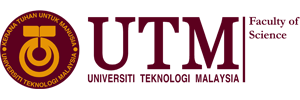An Elaeocarpus grandiflorus Leaves Extract Increased Immunoglobulin G Activity and Total Protein of SRBC-Induced Rat
DOI:
https://doi.org/10.11113/jomalisc.v3.66Keywords:
Elaeocarpus grandiflorus, immunoglobulin G, immunostimulantAbstract
The immune system plays a critical role in defending against viral infections such as Covid-19. Elaeocarpus grandiflorus contains various active compounds, including flavonoids, saponins, polyphenols, and tannins. Among these, the primary flavonoids identified in E. grandiflorus are kaempferol, quercetin, procyanidin, naringin, orientin, iso-orientin, vitexin, isovitexin, rutin, luteolin, and epicatechin. Kaempferol and quercetin have been particularly noted for their anti-inflammatory properties and their potential to enhance the immune system. This study aimed to investigate the effects of E. grandiflorus leaf extract on immunoglobulin G (IgG) activity and total protein levels in rats induced by sheep red blood cells (SRBC). Twenty-five Wistar rats were randomly assigned to five groups: P1, P2, P3, Negative control, and Positive control. The extract suspension was administered from day 1 to day 7 at concentrations of 100 mg/kg BW (P1), 200 mg/kg BW (P2), and 400 mg/kg BW (P3). On day 7, rats were intraperitoneally injected with 1 mL of a 2% v/v solution of SRBC as an antigen. IgG activity and total protein levels were assessed on day 12. The average agglutination titters were as follows: 3.65 (Negative control), 3.89 (Positive control), 3.77 (P1), 3.65 (P2), and 4.61 (P3). Additionally, the average total protein values for the groups were 1.44 mg/dL (Positive control), 1.00 mg/dL (Negative control), 1.18 mg/dL (P1), 1.22 mg/dL (P2), and 1.46 mg/dL (P3). Significant differences were observed in IgG activity and total serum protein levels among the groups. These findings suggest a potential immunostimulant effect of E. grandiflorus leaf extract and warrant further exploration for its development.
References
Sethi J and Singh. 2015. Role of Medicinal Plants as Immunostimulants in Health and Disease. Annals of Medicinal Chemistry and Research. 1(2)
Ganevi R. Savitri, Triatmoko B dan Nugraha AS .2020. Skrining Fitokimia dan Uji Aktivitas Antibakteri Ekstrak dan Fraksi Tumbuhan Anyang-Anyang (Elaeocarpus grandiflorus J. E. Smith.) terhadap Escherichia coli. JPSCR: Journal of Pharmaceutical Science and Clinical Research. 01: 22-32
Sagala D. 2018. Deskripsi, Metabolit Sekunder Dan Kegunaan Anyang-anyang (elaeocarpus Grandiflorus J.E. Smith). INA-Rxiv. February 10. osf.io/preprints/inarxiv/3unv8
Habibah NA, Anggaraito YU, Nugrahaningsih WH, Safitri, Musafa F, Wijawati N .2021. .LC-MS Based Secondary Metabolites Profile of Elaeocarpus grandiflorus J.E. Smith. Cell Suspension Culture Using Picloram and 2,4-Dichlorophenoxyacetic Acid. Tropical Journal of Natural Product Research. 5(8)
Chen AY and Chen YC. 2013. A review of the dietary flavonoid, kaempferol on human health and cancer chemoprevention. Food Chem. 138(4): 2099–2107. doi:10.1016/j.foodchem.2012.11.139
Ren J, Lu Y, Qian Y, Chen B, Wu T and Ji G .2019. Recent progress regarding kaempferol for the treatment of various diseases (Review). Experimental And Therapeutic Medicine. 18: 2759-2776
Alam W, Khan H, Shah MA, Cauli O dan Saso L .2020. Kaempferol as a Dietary Anti-Inflammatory Agent: Current Therapeutic Standing. Molecules 25: 4073
Wang J, Fang X, Ge L, Cao F, Zhao L, Wang Z, et al. .2018. Antitumor, antioxidant and anti-inflammatory activities of kaempferol and its corresponding glycosides and the enzymatic preparation of kaempferol. PLoS ONE. 13(5): e0197563. https://doi.org/10.1371/journal. pone.0197563
Silva dos Santos J, Gonçalves Cirino JP, de Oliveira Carvalho P and Ortega MM (2021) The Pharmacological Action of Kaempferol in Central Nervous System Diseases: A Review. Front. Pharmacol. 11:565700. doi: 10.3389/fphar.2020.56570
Dabeek WM and Marra MV. 2019. Dietary Quercetin and Kaempferol: Bioavailability and Potential Cardiovascular-Related Bioactivity in Humans. Nutrients. 11(2288)
Colunga Biancatelli RML, Berrill M, Catravas JD and Marik PE .2020. Quercetin and Vitamin :An Experimental, Synergistic Therapy for the Prevention and Treatment of SARS-CoV-2 Related Disease (COVID-19). Front. Immunol. 11:1451. doi: 10.3389/fimmu.2020.01451
Saeedi-Boroujeni A and Mahmoudian-Sani M. 2021. Anti-inflammatory potential of Quercetin in COVID-19 treatment. Journal of Inflammation. 18:3
Di Pierro F, Iqtadar S, Khan A, Mumtaz SU, Chaudhry MM, Bertuccioli A, Derosa G, Maffioli P, Togni S, Riva A, Allegrini P, Khan S. 2021. Potential Clinical Benefits of Quercetin in the Early Stage of COVID-19: Results of a Second, Pilot, Randomized, Controlled and Open-Label Clinical Trial. International Journal of General Medicine. 14: 2807–2816
Tang, X. L., Liu, J. X., Dong, W., Li, P., Li, L., Hou, J. C., et al. 2015. Protective effect of kaempferol on LPS plus ATP-induced inflammatory response in cardiac fibroblasts. Inflammation. 38 (1), 94–101. doi:10.1007/s10753-0140011-
Li Y, Yao J, Han C, Yang J, Chaudhry MT, Wang S, Liu H, and Yin Y .2016. Quercetin, Inflammation and Immunity. Nutrients. 8 (167)
Tjan LH, Furukawa K, Nagano T, Kiriu T, Nishimura M, Arii J, Hino Y, Iwata S, Nishimura Y, Mori Y. Early Differences in Cytokine Production by Severity of Coronavirus Disease 2019. 2021. J Infect Dis. 223(7):1145-1149. doi: 10.1093/infdis/jiab005. PMID: 33411935; PMCID: PMC7928883)
Hoffman, W., Lakkis, F. G., & Chalasani, G. 2016. B cells, antibodies, and more. Clinical Journal of the American Society of Nephrology, 11(1), 137–154. https://doi.org/10.2215/CJN.09430915
Wolo KBR, Anita E, Sri M, Retno W. 2019. Dinamika total protein serum tikus putih (Rattus norvegicus) yang diberi mikrokapsul imunoglobulin-G anti-H5N1. Jurnal Veteriner. 20(4): 504-510
Zhao H, Liu M, Liu H, Suo R, Lu C. Naringin protects endothelial cells from apoptosis and inflammation by regulating the Hippo-YAP Pathway. Biosci. Rep. 2020 Mar 27; 40 (10.1042/BSR20193431. Erratum in: Biosci Rep. 2020 Jul 31;40(7): PMID: 32091090; PMCID: PMC7056449)BSR20193431
Deenonpoe R, Prayong P, Thippamom N, Meephansan J, Na-Bangchang K. 2019. Anti-inflammatory effect of naringin and sericin combination on human peripheral blood mononuclear cells (hPBMCs) from patient with psoriasis. BMC Complement Altern Med. 19(1):168. doi: 10.1186/s12906-019-2535-3. PMID: 31291937; PMCID: PMC6617890)
Beurel E, Grieco SF and Jope RS. 2015. Glycogen synthase kinase-3 (GSK3): regulation, actions, and diseases. Pharmacol Ther. 148:114-31. doi: 10.1016/j.pharmthera.2014.11.016
Maurya AK, Vinayak M. PI-103 and Quercetin Attenuate PI3K-AKT Signaling Pathway in T- Cell Lymphoma Exposed to Hydrogen Peroxide. PLoS One. 2016 Aug 5;11(8):e0160686. doi: 10.1371/journal.pone.0160686. PMID: 27494022; PMCID: PMC4975451.
Yu H, Littlewood T, Bennett M. Akt isoforms in vascular disease. Vascul Pharmacol. 2015 Aug;71:57-64. doi: 10.1016/j.vph.2015.03.003. Epub 2015 Apr 28. PMID: 25929188; PMCID: PMC4728195
Lida M, P.M. PM, Wheeler DL, and M. Toulany. 2020. Targeting AKT/PKB to improve treatment outcomes for solid tumors. Mutation Research/Fundamental and Molecular Mechanisms of Mutagenesis: 819–820
Wong CE, Yu JS, Quigley DA, To MD, Jen KY, Huang PY, Del Rosario R, Balmain A. Inflammation and Hras signaling control epithelial-mesenchymal transition during skin tumor progression. Genes Dev. 2013 Mar 15;27(6):670-82. doi: 10.1101/gad.210427.112. PMID: 23512660; PMCID: PMC3613613.
Simanshu DK, Nissley DV, McCormick F. RAS Proteins and Their Regulators in Human Disease. Cell. 2017 Jun 29;170(1):17-33. doi: 10.1016/j.cell.2017.06.009. PMID: 28666118; PMCID: PMC5555610.
Saraswati AP, Ali Hussaini SM, Krishna NH, Babu BN, Kamal A .2018. Glycogen synthase kinase-3 and its inhibitors: potential target for various therapeutic conditions. Eur J Med Chem. 144:843–58
Ougolkov AV, Fernandez-Zapico ME, Savoy DN, Urrutia RA, Billadeau DD. 2005. Glycogen synthase kinase-3 beta participates in nuclear factor kappaB-mediated gene transcription and cell survival in pancreatic cancer cells. Cancer Res. 65(6):2076–81
Lee KH, Yoo CG. Simultaneous inactivation of GSK-3β suppresses quercetin-induced apoptosis by inhibiting the JNK pathway. Am J Physiol Lung Cell Mol Physiol. 2013 Jun 1;304(11):L782-9. doi: 10.1152/ajplung.00348.2012. Epub 2013 Apr 5. PMID: 23564507.


















